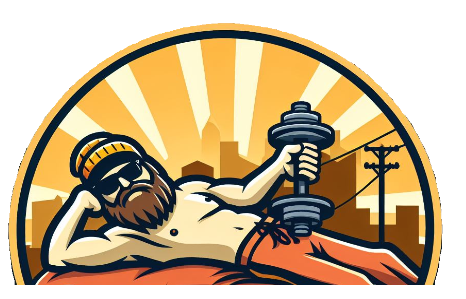Unlocking Athletic Power with Diaphragmatic Breathing
Let’s be honest—when we think about improving athletic performance, we tend to focus on the big-ticket items like training routines, diet plans, supplements, or gear. But there’s one powerhouse tool most athletes overlook: the breath.
It’s something we all do automatically, yet rarely think about. But when used with intent and proper technique, breathing becomes a secret weapon that can elevate your energy, muscle performance, endurance, and even your mental game.
Introducing Breath:
Your Secret Weapon
The way you breathe affects everything from how much oxygen your muscles receive to how calm or focused your mind is before a competition. Athletes often find themselves gasping for air during a hard run or losing form during a heavy lift—sometimes not because of fitness, but because of inefficient breathing.
Scientific studies back this up. A 2017 review in Sports Medicine found that respiratory muscle training improved both endurance and strength performance. Another study from the Journal of Applied Physiology showed that controlled breathing reduced perceived exertion during high-intensity workouts.
Even elite athletes like Novak Djokovic and Olympic swimmers like Michael Phelps credit focused breathing techniques for helping them stay centered and powerful under pressure.
So what’s the secret? Diaphragmatic breathing.
Mastering Diaphragmatic Breathing
Most people breathe shallowly, using their chest. But diaphragmatic breathing—also called belly breathing—draws air deep into your lungs using your diaphragm muscle. This method increases oxygen intake and stabilizes the core, making your movements more efficient and less fatiguing.
Here’s how to practice:
- Lie on your back with one hand on your chest and one on your belly.
- Inhale slowly through your nose. Your belly should rise, while your chest stays relatively still.
- Exhale slowly through your mouth, tightening your core slightly as your belly drops.
Practice this for 5–10 minutes a day. Try incorporating it into your warm-up to calm nerves or cool-down to help recovery.
Benefits include:
- Increased oxygen delivery to muscles
- Better stamina and endurance
- Improved mental clarity and reduced anxiety
- Stronger core engagement (which also supports good posture and technique)
Breathing Strategies for Different Disciplines
Not all sports require the same breathing rhythm. Here’s how diaphragmatic breathing adapts:
- Running: Sync breath with strides. Inhale for 3 steps, exhale for 2, adjusting as needed for pace.
- Swimming: Use strong exhales underwater and deep inhales during brief breaks above water.
- Cycling: Focus on exhaling completely to allow better oxygen exchange; aim for rhythmic patterns during climbs or sprints.
- Strength Training: Inhale during the lowering phase, exhale powerfully during the push or lift to stabilize the core.
Facing pre-race jitters or training fatigue? Slow, deep breathing can reset your nervous system. Try box breathing—inhale for 4 counts, hold for 4, exhale for 4, hold for 4. Repeat for 2–3 minutes before a workout or event.
Use A Breathing tool
Breathing and Mental Performance
Breath isn’t just physical—it’s profoundly mental. Your breathing is one of the few automatic processes you can consciously control, and doing so gives you access to your body’s stress response.
Controlled breathing activates the parasympathetic nervous system, shifting you into a calmer, more focused state. This helps with:
- Concentration during performance
- Managing nerves and anxiety
- Staying composed under pressure
Many athletes now include mindful breathing and visualization techniques in their routines. Picture yourself succeeding while controlling your breath—it activates both mental imagery and physical calmness, creating a strong mind-body connection.
Athletes like free divers, martial artists, and even NFL players now use these methods not just for performance, but for recovery and longevity.
Breathing for Peak Performance
How you breathe matters.
Switching from shallow, chest-based breathing to deep, diaphragmatic breathing can give you more stamina, sharper focus, and faster recovery. Whether you’re training casually or chasing a new personal best, better breathing can make your journey smoother—and more enjoyable.
Try this simple plan:
- Start each day with 5 minutes of deep breathing
- Integrate breathing into warm-ups and cooldowns
- Practice specific techniques for your sport
- Use breathing to reset when you’re stressed or fatigued
Want to learn more? Check out breathing resources like the books…
The Oxygen Advantage by Patrick McKeown or…
Breath by James Nestor.
Or follow guided breathing videos on YouTube that walk you through performance-enhancing techniques.
At The Lazy Athlete, we believe in training smarter, not harder—and breathing better is the smartest (and laziest) upgrade you can make.
So, take a breath. Then take your performance to the next level.
Steve

Some links on this site may be affiliate links, and if you purchase something through these links, I will make a commission on them.
There will be no extra cost to you and, you could actually save money. Read our full affiliate disclosure here.

